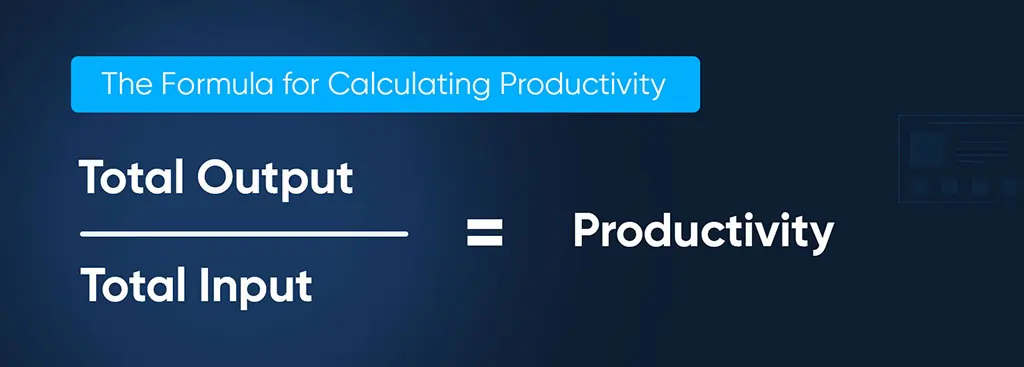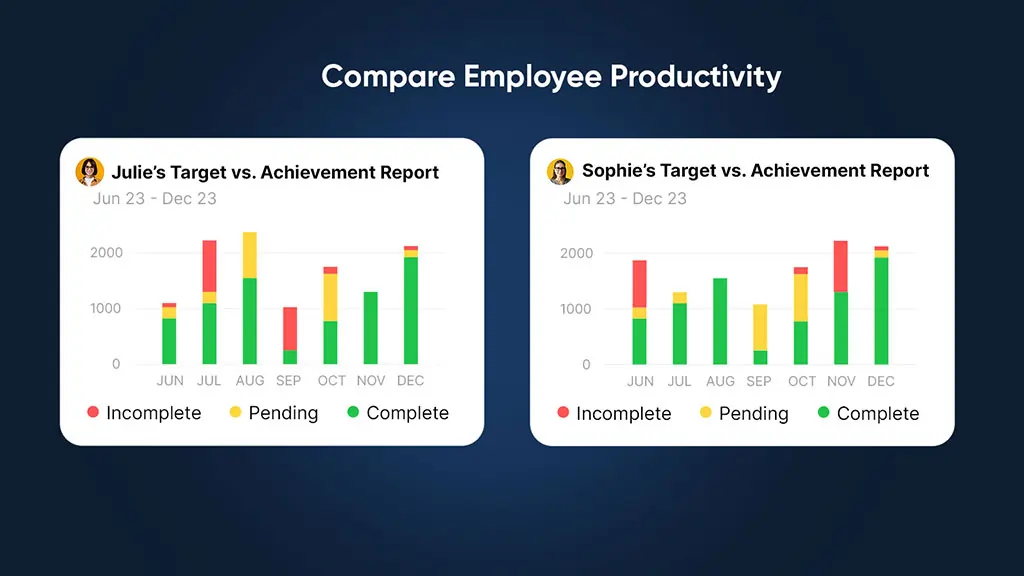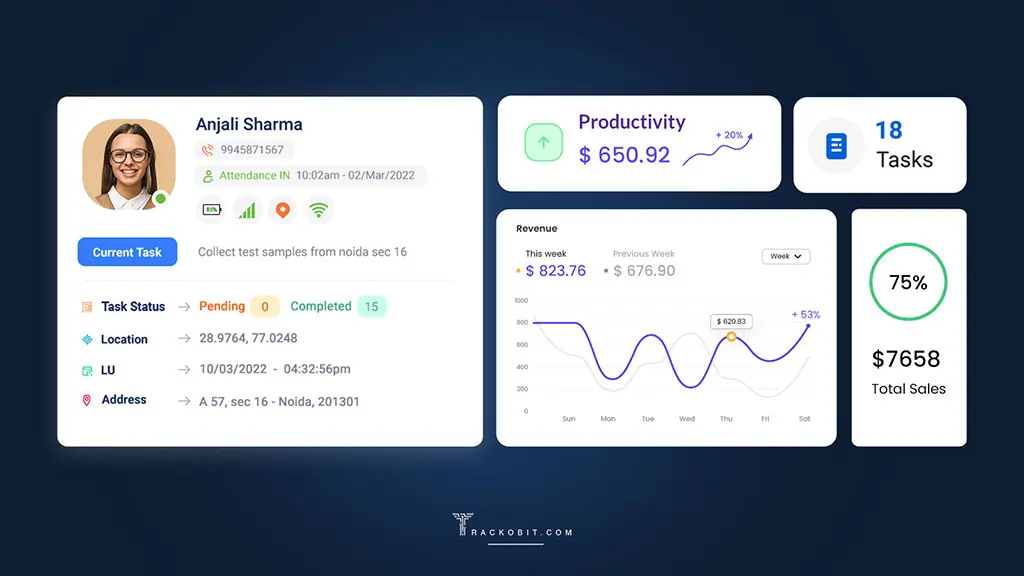-
TrackoBit
Manage commercial vehicles with the new-age Fleet Management Software
TrackoBit -
TrackoField
Streamline your scattered workforce with Field Force Management Software
TrackoField -
Features Resources
-
Blog
Carefully curated articles to update you on industrial trends. -
White Paper
Insightful papers and analysis on essential subject matters. -
Glossary
Explore an alphabetical list of relevant industry terms. -
What’s New
Get TrackoBit & TrackoField monthly updates here. -
Case Study
Explore the cases we solved with our diverse solutions. -
Comparisons
Compare platforms, features, and pricing to find your best fit.
-
About Us
Get to know TrackoBit: our team, ethos, values, and vision. -
Careers
Join the most dynamic cult of coders, creatives and changemakers. -
Tech Support
Learn about our technical support team and services in detail. -
Events
Check out the exhibitions where we left our marks and conquered. -
Contact Us
Connect with us and let us know how we can be of service.
How to Calculate Employee Productivity: 5 of the Best Methods
- Author:Tithi Agarwal
- Read Time:6 min
- Published:
- Last Update: January 7, 2026
Table of Contents
Toggle
Searching for ways to calculate employee productivity? And identify underperforming areas and staff. Here are the 5 best methods to do so!
Table of Contents
ToggleEmployee productivity is calculated by how efficiently employees complete their tasks. These tasks could include hitting sales targets, closing tickets, or servicing clients. This calculation also measures how well the resources are being utilized.
Yet how can you tell whether your employees’ productivity is at its peak? You shouldn’t leave anything to chance. It becomes essential to calculate employee productivity for tracking employee performance. They also help identify areas where the workforce may be lacking.
This guide will walk you through a step-by-step process for calculating productivity. You’ll also find valuable insights and actionable strategies.
Ready to get started? Let’s dive in.
What is Productivity in Business? In General
Productivity metrics for employees indicate how well your company achieves its goals. They take into account the quality and value of the job done. Additionally, the hours it took to complete the tasks.
What are the Key Factors Affecting Employee Productivity?
Here are some of the common barriers to increasing productivity:
1. Work environment
No individual likes to work in a negative or toxic environment. So, create a workplace atmosphere that has the right values. One should feel supported, valued, and safe.
Create a place where employees can work together, have fun challenges, and be kind to each other. This type of environment teaches healthy work habits, which result in a productive workforce.
2. Training & career development opportunities
Every employee wants to grow in their career. So it’s essential to ensure that employers invest in their professional development. Provisioning relevant training opportunities will help.
An untrained employee won’t know what to do or how to complete tasks efficiently. This negatively impacts employee performance metrics.
3. Processes
Nothing impacts staff efficiency calculation more than processes. This includes everything from recruiting and onboarding to compensation, performance, and task management.
Establishing processes ensures a positive working experience from the start. Also, companies with great workers make sure they have good ways to hire people and plan projects.
4. Employee wellness
Employee wellness is an important topic to consider when you calculate employee productivity analysis. It refers to the physical and mental health of team members.
Employers have a duty to provide the workforce with the tools and resources they need. They should also show that they care and offer solutions to problems.
5. Tools availability
Provide your staff with the correct tools. For example, make HVAC tools readily available for field service technicians. This directly improves employee productivity.
Poorly skilled staff will slow up the process, make rookie mistakes, and do redundant tasks. This is just like inviting waste of resources and excessive overheads.
What are the Key Metrics to Consider When You Calculate Employee Productivity?
A productivity metric is a measurement that expresses part or all of the company’s output in terms of an input. Here are efficiency metrics that companies track when they calculate employee productivity.
- Projects completion rate
- Sales targets achieved
- Sales growth
- Revenue per employee
- Effectiveness ratio
- Total cost of workforce
- Overtime hours
- Turnover rate
- Recruiting conversion rate
Why Should You Calculate Employee Productivity?
Calculating employee output can assist managers, staff, and company owners make better decisions.
When you take steps to improve and calculate employee productivity, you’re doing more than just helping the company become more competitive. You’re laying the groundwork for employees’ engagement and motivation.
One of the most underappreciated aspects of output is its impact on staff satisfaction. Managers only see the workforce’s worth and contribution when they evaluate their efficiency. As a result, efficacy increases even further, and the workplace becomes happier.
The Formula to Calculate Employee Productivity
Though we know that success has no formula attached to it—it’s the result of all the hard work. However, there is a formula to calculate employee productivity does have a formula to it.

Formula for Calculating Employee Productivity
Start with a basic formula to quantify the relationship between inputs and outputs:
- Output:
This defines the quantity/number of commodities produced or the amount of money made from sales.
- Input:
These factors directly affect results, including time spent on activities or resources committed to a project.
- Productivity:
This indicates how well and quickly your workforce produces outcomes throughout a pre-determined time frame.
*Disclaimer:
While the exact equation may vary depending on the context, the general principle remains the same: Divide output (what your organization produced) by input (what your workforce did or which resources were used to achieve that output).
What are the Challenges in Measuring Employee Productivity?
There are certain challenges that affect the process to calculate employee productivity
- Defining Productivity Metrics
It can be difficult to establish clear, measurable, and fair criteria for assessing outcomes.
- Diverse Job Roles
Different roles need varied performance metrics. So, it is hard to apply a uniform system.
- Quality vs. Quantity
Focusing solely on the number of tasks completed might overlook the quality of work.
- Remote Work Monitoring
Tracking efficiency in remote setups can be challenging without proper tools.
- Lack of Feedback
Employees may feel disconnected without regular feedback, affecting their performance.
- Employee Resistance
Monitoring tools can feel invasive, leading staff to perceive micromanagement. Using the right tools can help avoid this and promote the macro management of field employees.
- External Influences
Personal issues, workplace environment, or unexpected disruptions can skew productivity measurements.
- Over-Reliance on Automation
Relying too much on automated tools may fail to capture intangible factors like creativity or collaboration.
The 5 Best Ways To Calculate Employee Productivity
There are several different ways to calculate employee productivity, depending on what metrics you have to work with.
1. The Standard Productivity Formula
The productivity formula, in its most basic form, might be the most practical for some sectors and divisions. To calculate it, divide the total number of hours worked within a certain period of time by the quantity of goods or services produced.
For instance, let’s say it took 1,300 hours of employees’ work to produce 13,000 units last quarter. In this example, the calculation would be 13,000/1,300 = 10 units per hour.
This method can be used to determine the amount produced each quarter, but the quality of the items is not considered. Although it is effective for simple estimates, other situations can call for a different strategy, considering more subtle elements like employee input or intended results.
2. Targets v/s Achievement Reports
Targets v/s achievement reports are clear indicators of productivity. They come in handy where precise measurements, such as the quantity of units produced, cannot be gained. Alternatively, you may determine what proportion of your staff members’ targets have been met. Teams with well-defined goals and deadlines can greatly benefit from this approach.
TrackoField auto-generates these reports, which allows you to review them regularly without having to mine the data manually. This data even helps you recognize areas of unproductiveness. Identifying these areas is essential for devising strategies to rectify them. This makes the method to calculate employee productivity easy and efficient.

With Target vs. Achievement Report Compare Employees’ Productivity Levels
| For example, let’s say you set a target for your IT help desk to resolve 100 tickets each week, and they exceed that to address 120. You can measure output based on the percentage of goals met using the following formula: Achievement/Goal x 100. So, in this case, 120/100 = 120% of the goal. |
3. Task Tracking
One of the easiest ways to calculate and boost employee productivity is to keep track of the tasks given to team members. The time it takes them to complete the task or the extent to which they solve the problem may be decisive factors. Job completion rates will eventually impact employee performance KPIs.
Many business owners believe that tasks completed are a better way to measure work performance. They focus on how many tasks a person finishes to assess their output and quality. For them, the number of hours clocked in is not as important as the results delivered.
Employee productivity can also be tracked by monitoring task progress. However, this is not always easy. Tracking an employee’s task updates can be difficult. If tasks are not tracked properly, measuring output becomes harder. It also makes it tough to know how productive the employee really is.
| Go Digital, Go TrackoField!
If you are tracking projects and tasks using Excel spreadsheets, you need to upgrade to automation. TrackoField’s field employee task management software streamlines the process of monitoring your workforce’s work. It offers several different project management tools to enhance efficiency. |
4. Revenue per Employee
Using this method, you just divide the total number of people working during a given period by the revenue made during that period. This method is straightforward, making it easy to calculate employee productivity.But the results can be quite illuminating, particularly if you re-calculate it frequently. The more productive your company is, the bigger the revenue per employee.
For example, if you have 200 employees and your annual revenue is $1 million.
Your revenue per employee would be 1,000,000/200 = $5000 per employee.
This approach’s drawback is that it leaves you without an idea of how productive each individual is. Thus, it is impossible to pinpoint workers who exceed or fall short of targets.
5. TrackoField- The #1 Tool to Calculate Employee Productivity
TrackoField’s field employee tracking software is ideal for companies that need a high degree of accuracy. Its solution collects workforce activity data on individual and team levels and signifies where employees are the most productive.
Automating productivity measurement allows you to quantify the work done in a day. With the distance traveled reports, managers can accurately calculate the distance traveled for meeting clients. Also, track the time to complete a single or group of tasks. Get productivity reports on each employee or team.
Apart from reports, with field force management software, you get to:
- You can assign urgent location-based tasks in bulk to teams.
- Simplify sales order-taking process for teams with order management software.
If you are operating a field team, calculating their efficacy can be tough. However, TrackoField’s real-time tracking, geocoded attendance marking, task status calculation, and specific reports can get you out of the problem.

TrackoField’s Dashboard Displaying Employee Productivity
Calculate Employee Productivity Efficiently!
Measuring employee productivity in the business world has certainly got its upside, as companies are becoming more focused on getting the most out of their staff in limited work hours. Calculating field employee productivity allows you to see their efficiency and effectiveness and the profits yielded by each one.
However, modern distractions require modern technology to calculate employee productivity. We suggest TrackoField, an employee monitoring software. With it, you can effortlessly track and monitor tasks, attendance, and productivity.
Frequently Asked Questions
-
How to increase employee productivity?
To boost productivity, set clear goals. Provide regular feedback to guide their efforts. Use effective tools like employee productivity tracking software to streamline tasks. Foster a positive work environment. Encourage skill development. Recognize achievements to keep individuals motivated.
-
Productivity vs. Performance: How do they differ?
Productivity measures the output per unit of effort, while performance reflects the quality and effectiveness of that output. Productivity focuses on quantity, whereas performance emphasizes the impact and results of work.
-
How does employee engagement increase productivity?
Employee engagement boosts yield by motivating the workforce, improving job satisfaction, and fostering ownership. Engaged workers are more committed, focused, and proactive, resulting in higher performance and efficiency.
Tithi Agarwal is an established content marketing specialist with years of experience in Telematics and the SaaS domain. With a strong background in literature and industrial expertise in technical wr... Read More
Related Blogs
-

Grameen Credit Score: Everything that NBFCs and MFIs Must Know in 2026
Shemanti Ghosh January 6, 2026Empower the underserved Joint Liability Groups (JLG), Self-Help Groups (SHG), and residents of rural India with better credit assessment and…
-

How MFIs Are Working In Modern Day Scenario? A Complete Breakdown
Mudit Chhikara December 30, 2025How field force automation is helping MFIs transform field operations.
-

Unified Field Workforce Dashboard: Monitor Tasks, Attendance & More In One Place
Mudit Chhikara December 15, 2025Bring full clarity to field operations with a single, real-time field workforce dashboard.
-

Loan Disbursement in NBFCs: From 15 Days to 3 Minutes – Learn How
Shemanti Ghosh December 11, 2025TrackoField’s AI-enabled field force automation software speeds up loan disbursals in NBFC with field agent task monitoring and facial attendance…

Subscribe for weekly strategies to boost field team productivity.
Your inbox awaits a welcome email. Stay tuned for the latest blog updates & expert insights.
"While you're here, dive into some more reads or grab quick bites from our social platforms!"Stay Updated on tech, telematics and mobility. Don't miss out on the latest in the industry.
We use cookies to enhance and personalize your browsing experience. By continuing to use our website, you agree to our Privacy Policy.



































